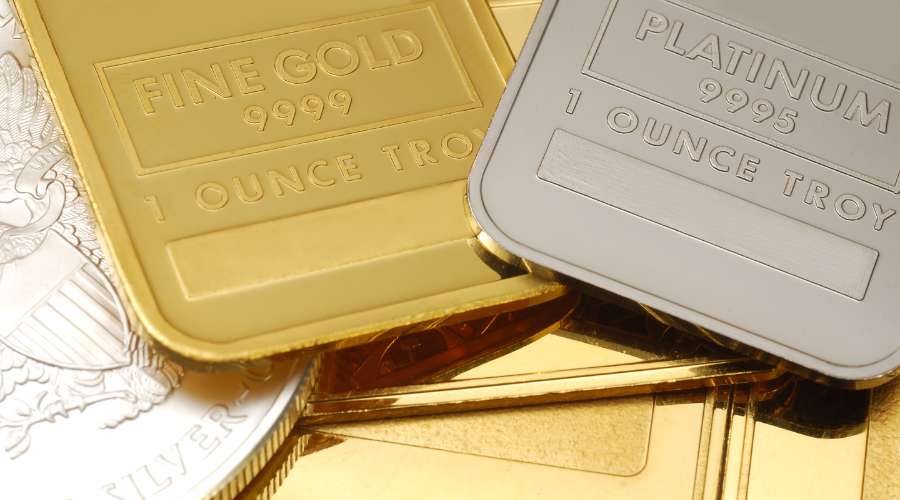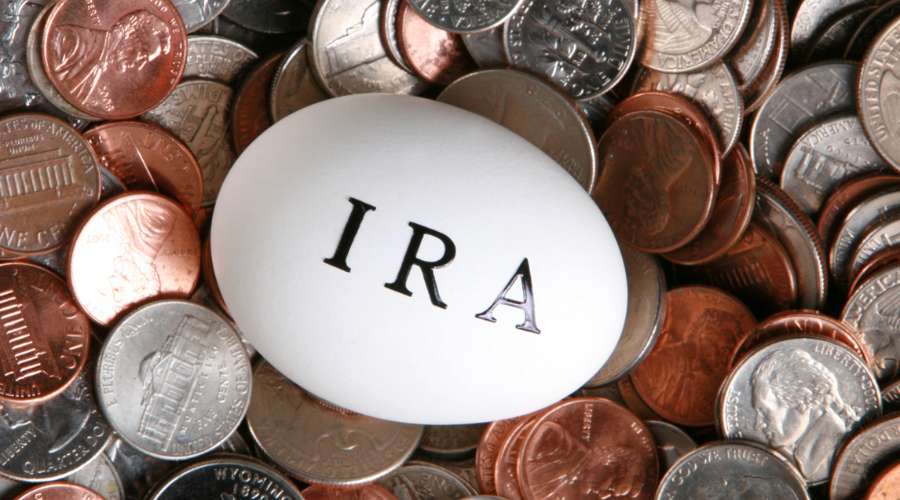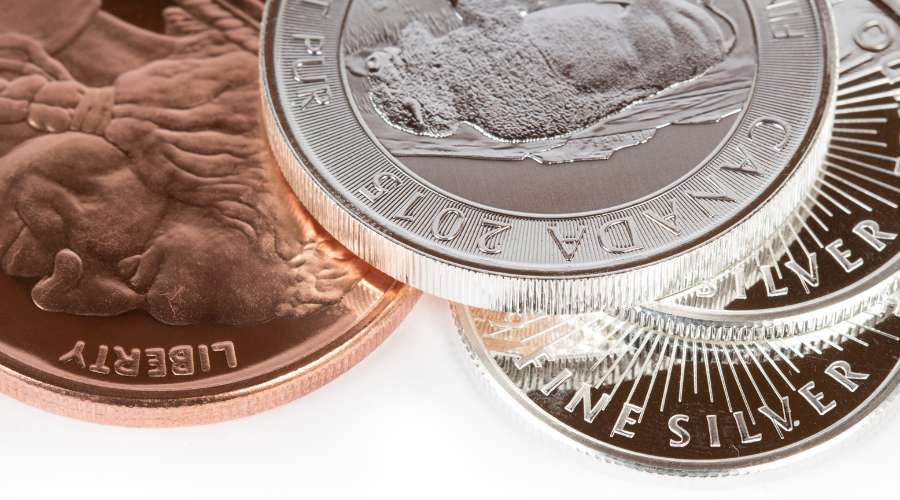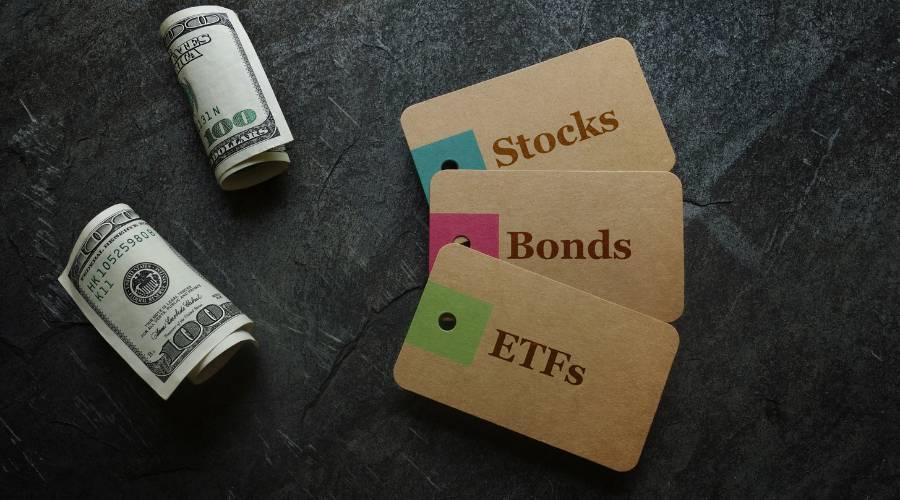Precious metals have been prized for their beauty and rarity for centuries. Still, many investors are unaware of the potential for investing in precious metals like gold and silver to diversify their retirement portfolios.
Adding precious metals to your individual retirement account (IRA) can be a smart way to protect your nest egg from market volatility and create a stronger foundation for your retirement savings. In this guide, you will learn the basics of precious metals investing, the potential benefits of adding precious metals to your IRA, and how to get started.
Whether a novice or an experienced investor, this guide will give you the information you need to make informed decisions about adding precious metals to your retirement portfolio.
If you are interested in investing, make sure to take a look at our highest recommended companies for this year!
>> Click Here For A List Of The 5 Highest Recommended Precious Metals Investment Companies <<
Overview of Precious Metals

Precious metals have a long and fascinating history; for many, they remain a sound investment. Precious metals are rare elements with unique physical and chemical properties, such as malleability and ductility. They include gold, silver, platinum, and palladium. Each of these metals has different characteristics that make them desirable in various industries and markets.
Gold is the most popular precious metal in jewelry, coins, and financial markets. It's prized for its beauty and malleability, and it's also a good conductor of electricity. Gold is also a great store of value, and its price tends to remain stable over time. As a result, it's often used as a hedge against inflation.
Silver is the second most popular precious metal. It's valued for its ability to reflect light and conduct electricity. Silver is often used in jewelry, coins, and electronics due to its affordability and ductility. Additionally, silver can be used as an industrial material and is found in many products, from kitchenware to medicine.
Platinum is the third most popular precious metal. It's incredibly rare and is known for its durability and strength. Platinum is often used in electronics, jewelry, and catalytic converters. It's also used as a currency hedge because its price tends to remain more stable than other metals.
Palladium is the fourth most popular precious metal. It's often used in jewelry, electronics, and catalytic converters. Palladium is also used in dental fillings and other medical applications. It's valued for its durability and versatility.
What Is a Precious Metal IRA?
A precious metal IRA is an individual retirement account (IRA) that allows you to invest in physical precious metals, such as gold and silver. These self-directed accounts enable you to diversify your retirement portfolio with hard assets, providing long-term growth and stability opportunities.
Precious metals are considered one of the most reliable and secure investments available and are sought after for their ability to protect against inflation and market volatility.
With a Precious Metal IRA, you can choose from various metals and coins, including gold, silver, platinum, and palladium. Depending on the custodian and financial institution, you may be able to purchase American Eagles, Canadian Maple Leafs, Krugerrands, or Austrian Philharmonics.
As self-directed accounts, precious metal IRAs allow you to take control of your retirement planning. You're in charge of making all the decisions, so you can determine the types of metals you want to invest in and the amount you wish to allocate to each.
Additionally, you can select a custodian to handle your account, allowing you to focus on choosing the best asset allocation for your retirement goals.
Types of Precious Metal IRA Accounts

There are three primary types of precious metal IRAs:
No matter which type of precious metals IRA you choose, you can rest assured that you are investing in a secure asset class to help you reach your retirement goals.
Benefits of Investing in Precious Metals
Investing in precious metals can provide various benefits, making it an attractive option for many investors. Here are some of the top advantages of investing in precious metals.
Diversification
Gold is not affected by the same economic forces that influence stocks and bonds, so it can act as a buffer against market volatility and help protect you from the risks associated with traditional investments. It also provides a way to diversify your portfolio, as gold prices are not necessarily tied to the stock market.
Liquidity
If you need to access your funds quickly, gold and silver can be easily converted into cash. This makes them ideal for investors who need to access their money quickly or who may need to use the funds for an emergency.
Stability and a Hedge Against Inflation
Gold and silver are both considered safe havens in times of economic uncertainty. They are not affected by the same economic forces that influence stocks and bonds, so they can help protect your investments from market volatility. In addition, precious metals tend to increase in value when inflation rises, making them an ideal way to protect your investments from the effects of inflation.
Preservation of Wealth
Gold and silver are both considered reliable storehouses of value and can help protect your investments from market fluctuations. They are also seen as long-term investments, as they are not affected by the same economic forces that influence stocks and bonds.
Tax Advantages
Some gold IRA investments are eligible for special tax treatment, which can help you save money on taxes. Gold is also considered a non-taxable asset, meaning you will not have to pay taxes on any gains you make from your investment, particularly if you invest in a Roth gold IRA.
Quality of Precious Metals Allowed in an IRA?

When investing in precious metals, the Internal Revenue Service (IRS) has some specific requirements regarding purity. Generally, the IRS will accept gold, silver, platinum, and palladium as investment forms.
Gold is the most popular of these precious metals and must have a minimum fineness of .995. This means that the metal must be 99.5% pure gold. Any gold bars, coins, or bullion that does not meet this standard cannot be accepted by the IRS.
Silver also needs to be at least .999 fine. This means that it must be 99.9% pure silver. Silver bars, coins, or bullion that do not meet this standard are not eligible for investment.
Platinum must have a minimum purity of .9995, meaning it must be 99.95% pure platinum. Just like gold and silver, any forms of platinum that do not meet the standards set forth by the IRS cannot be accepted as an investment.
Palladium must meet a minimum purity of .9995, making it 99.95% pure palladium. As with the other precious metals, anything that doesn't meet this standard isn't suitable for investing.
The purity requirements set forth by the IRS may seem strict, but they are designed to ensure that your investments are of the highest quality. With the right knowledge, you can make wise investments in any of these precious metals and enjoy the financial rewards.
Adding Precious Metals to Your IRA
Here are the steps you need to take to add precious metals to your IRA.
Step 1: Choose a Precious Metals Dealer
The first step is to choose a reputable precious metals dealer accredited by the Better Business Bureau (BBB). When selecting a dealer, please do your due diligence and research their credentials, customer service, and product selection.
Be sure to ask questions and read reviews to find out if the dealer is reliable and trustworthy. You want to make sure that you are dealing with a company that will provide high-quality products and excellent customer service. Additionally, look into their shipping and return policies before making a purchase.
Step 2: Open a Self-Directed IRA
Once you've chosen a dealer, you'll need to open a self-directed IRA with a qualified custodian. The custodian will act as your account administrator and handle all the paperwork and transactions required for investing in precious metals.
All you need to do is fill out the paperwork with basic information about yourself. This includes your name, address, Social Security number and birth date. Once you submit this information, the custodian will review it and contact you with any questions or additional information they may need.
Step 3: Choose Your Precious Metals
You can opt for bars or coins of gold, silver, platinum, or palladium. It's important to ensure you know the different types of each precious metal and their specific weight and purity. Gold coins, for example, come in various sizes, ranging from a one-ounce coin to a 1/10-ounce coin.
Silver coins come in sizes ranging from one-ounce to 1/2-ounce coins. Platinum coins come in sizes including one-ounce, 1/2-ounce, and 1/10-ounce coins. Palladium coins come in sizes from one-ounce to 1/10-ounce coins.
Once you have chosen the size of your preferred coins or bars, you need to ensure that each one meets the required purity standards for IRAs. Gold should have a purity of at least .995; silver should be .999 pure, platinum .9995 pure, and palladium .9995 pure.
Step 4: Fund the Account
Now that you've determined which types of metals you'd like to add, it's time to fund your account. You can do this by cash contribution, rollover, or IRA transfer.
Step 5: Purchase the Precious Metals
You will need to provide certain details including the type and amount of metals you'd like to purchase, as well as the address of the depository you'd like the metals shipped.
Once you have all the necessary information, you can complete your purchase by submitting an online form or calling a representative. After placing your order, you can expect the physical precious metals to arrive at the depository within 5-7 business days.
Step 6: Monitor Your Account
It's important to stay on top of your investments and ensure they perform as expected. You should review your portfolio regularly and look for opportunities to re-balance or adjust your precious metals holdings as needed.
You can also use online tools to track the performance of your precious metals in real-time. This will help you stay informed of market fluctuations and other events that could affect the value of your IRA holdings. It would help if you took advantage of any resources available to help you stay up-to-date on the latest news and information related to the precious metals markets.
Lastly, don't forget to consult with your financial advisor if you have any questions or concerns about your investment strategy. They can provide valuable insight and guidance to help you make the best decisions regarding managing your IRA.
Other Indirect Ways to Invest in Precious Metals

There are various indirect ways to invest in precious metals that can be just as rewarding as direct investment. Here are some of the best strategies for investing in precious metals without buying the metal itself.
Exchange-Traded Funds (ETFs)
ETFs provide a convenient and cost-effective way to invest in precious metals. When you purchase an ETF, you buy a basket of securities that track the performance of the underlying index. This means that when the index goes up, so does the value of the ETF. As a result, ETFs can provide exposure to a range of precious metals, including gold, silver, and platinum.
One of the main benefits of investing in ETFs is that they are highly liquid and easy to trade. This makes them an excellent choice for those looking to adjust their investments quickly. ETFs also allow investors to gain exposure to a wide range of markets. For example, many ETFs focus on specific regions or countries, allowing investors to gain exposure to more international markets.
Mining Stocks
Mining stocks are shares of ownership in a company that specializes in extracting and selling precious metals, such as gold, silver, platinum and palladium. Investing in these stocks can be advantageous, as you don't have to buy and store physical metals.
You also benefit from the leverage that comes with owning a portion of a company and may receive dividends if the company is doing well.
When investing in mining stocks, it's important to do your research. Ensure you understand the company and its activities and investigate its track record. Diversifying your investments is also important, so don't put all your eggs in one basket. Consider investing in various companies, as this will help spread your risk.
Finally, keep an eye on the markets, as the value of precious metals can fluctuate significantly over short periods. Pay attention to industry trends and news, and take advantage of any buying opportunities when prices dip.
Precious Metal Futures
Futures are agreements between two parties to buy or sell an asset at a predetermined price on a particular date in the future. With precious metal futures, investors can purchase contracts to buy or sell gold, silver, platinum, and palladium at a specific price on an agreed-upon date.
Futures are traded on exchanges, such as the New York Mercantile Exchange (NYMEX) and the London Metal Exchange (LME). When trading on these exchanges, investors need to understand the bid and ask prices, margin requirements, and the delivery process.
One of the advantages of investing in precious metal futures is that investors can benefit from price changes without taking physical delivery of the assets. Investors can also use leverage to maximize their returns.
Leverage allows investors to make larger investments with a smaller amount of capital. However, it is important to remember that leverage also increases risk.
Precious Metal Mutual Funds
These funds typically hold a portfolio of gold, silver, and other related investments. They offer the potential for diverse returns based on the performance of the underlying assets. When investing in a precious metal mutual fund, you can access a professionally managed portfolio without purchasing individual physical assets.
One of the advantages of investing in a precious metal mutual fund is that the fund manager will be able to diversify the fund's holdings and react to market changes quickly. This can reduce risk and maximize potential returns. The fees associated with investing in precious metal mutual funds tend to be lower than those associated with buying physical metal.
Final Thoughts
Adding precious metals to your IRA is a great idea and one that I highly recommend. Gold, silver, and platinum are all excellent investments that can help you build a secure retirement portfolio. With a gold IRA, you can benefit from the stability of gold, which historically has outperformed many other investments in times of economic crisis. Gold is a haven asset that can protect your retirement savings from inflation and market volatility.
When it comes to investing in gold IRAs, there are some excellent companies to choose from. Our team has thoroughly researched and selected the most reputable companies that offer gold IRAs, and we can confidently recommend them to you. Each company has a strong track record of providing reliable service, competitive pricing, and top-notch customer support. You can rest assured that these companies only use quality products and have knowledgeable professionals available to answer your questions.
Don't forget to check out our top recommended companies before investing!
